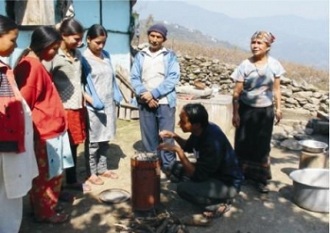Improving Child Nutrition: The achievable imperative for global progress, 2013. UNICEF. (Full text, pdf) Globally, about one in four children under 5 years old are stunted (26 per cent in 2011). An estimated 80 per cent of the world’s 165 million stunted children live in just 14 countries. Stunting and other forms of undernutrition reduce […]

-
SEARCH
Subscribe to Updates to WASH & Nutrition
-
Recent Posts
- Thank you for supporting WASHplus!
- Why Are Indian Kids Smaller Than African Kids? Hint: It’s Not Race
- Small Intestine Bacterial Overgrowth and Environmental Enteropathy in Bangladeshi Children
- Improving nutrition outcomes with better water, sanitation and hygiene: Practical solutions for policy and programmes
- Sanitation and nutrition: Should we link them together in our development actions?
- World Bank study on WASH and Nutrition in Bangladesh: Can Building Toilets Affect Children’s Growth?
- WASHplus Learning Brief on WASH and Nutrition
- Preventing environmental enteric dysfunction through improved water, sanitation and hygiene: an opportunity for stunting reduction
- Water, Sanitation, Hygiene, and Nutrition in Bangladesh” Can Building Toilets Affect Children’s Growth?
- Notes from the SuSanA WASH & Nutrition Working Group
Archives
Categories
Blogroll
Comments
Funded by

Partners



-
Subscribe